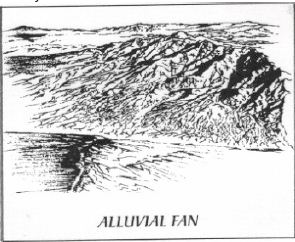نمایش نتیجه 1 تا 10 از 283 نتیجه یافت شده برای thin:
n: Schlumberger wireline tool that measures phase shift and attenuation of a 1100 MHz wave. Used for Hydrocarbon identification independent of formation water salinity, thin bed detection, Hydrocarbon saturation and mobility and to evaluate invaded zones.
n: (RSPA) a DOT agency that oversees the Office of Pipeline Safety, intermodal containers, highway portable tanks, railroad cars, and anything used in interstate or international commerce not regulated by the coast guard. Under OPA, RSPA has authority over onshore oil and hazardous materials pipelines that are used in interstate commerce. Address: 400 7th Street SW;Washington, DC 20590;(202) 366-4433.
n: A thin film that is formed in the surface of the substance after adsorbent adsorbs a substance.
n: the adhesion of a thin film of a gas or liquid to the surface of a solid. Liquid hydrocarbons are recovered from natural gas by passing the gas through activated charcoal, silica gel, or other solids, which extract the heavier hydrocarbons. Steam treatment of the solid removes the adsorbed hydrocarbons, which are then collected and re-condensed. The adsorption process is also used to remove water vapour from air or natural gas. Compare absorption.
n: A surface phenomenon exhibited by a solid (adsorbent) to hold or concentrate gases, liquids or dissolved substances(adsorptive) upon its surface, due to adhesion.
the attraction and holding of a layer of a chemical on the wall of a formation. Usually held by ionic charge or wetting preference.
n: the grouping of individual particles.
n: The process that the size
in the disperse phase turns from thin to bastard, from small to big through the absorption of particles in the multiphase disperse system.
forming larger droplets, bubbles, or particles from smaller droplets, bubbles, or particles.
n: diving in which a diver uses a normal atmospheric mixture of oxygen and nitrogen as a breathing medium. It is limited to depths less than 190 feet (58 metres) because of the dangers of nitrogen narcosis;however, dives with bottom times of 30 minutes or less may be conducted to a maximum of 220 feet (67 metres).
n: a method of improved recovery in which alkaline chemicals such as sodium hydroxide are injected during a water flood or combined with polymer flooding. The chemicals react with the natural acid present in certain crude oils to form surfactants within the reservoir. The surfactants enable the water to move additional quantities of oil from the depleted reservoir. Compare chemical flooding, polymer flooding, water flooding.
n: a large, sloping sedimentary deposit at the mouth of a canyon, laid down by intermittently flowing water, especially in arid climates, and composed of gravel and sand. The deposit tends to be coarse and unworked, with angular, poorly sorted grains in thin, overlapping sheets. A line of fans may eventually coalesce into an apron that grows broader and higher as the slopes above are eroded away.
land counterpart of a river delta. Characteristic of sediments that have been transported by a fast moving stream then dropped out of the flow as the stream velocity drops as it spreads out. Typical of zones of heavy water runoff such as found at the base
مخروط آبرفتی
n: a wireline instrument for measuring bottomhole temperature or pressure. It contains a clock-driven recording section and either a pressure element or a temperature element. It is thin enough to pass downhole through small tubing.
n: (NH4)2HPO4, white crystalline material. Usually used as mud thinner of drilling fluid and shale inhibiter.





